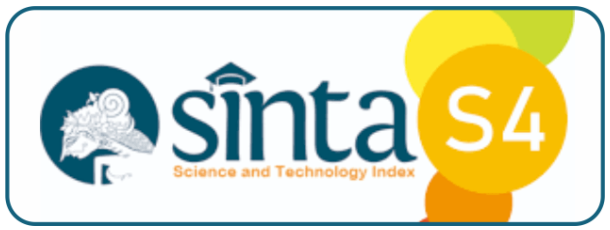The Role of Computers in Collaborative E-Learning: Implications for the Future of Digital Education
DOI:
https://doi.org/10.32877/bt.v7i3.2277
Keywords:
Collaborative E-learning, Digital Education, Educational Innovation, Learning Technology, Role of Computers
Abstract
The development of digital technology has driven significant changes in the world of education, especially through the implementation of collaborative e-learning. Computers play a crucial role in supporting interactive online learning processes, enabling more effective collaboration between students, educators, and learning resources. This study aims to analyze the role of computers in collaborative e-learning and its implications for the future of digital education. This study uses a descriptive qualitative method, with data collection techniques through literature studies and interviews with educators and e-learning practitioners. The results of the study show that computers function as facilitators in various aspects of collaborative e-learning, such as online-based communication, accessibility of educational resources, and integration of artificial intelligence and big data in learning personalization. The advantages of computers in increasing interaction and effectiveness of learning in the digital environment are the main factors in optimizing collaborative e-learning. However, this study also found several challenges, such as the gap in access to technological devices, the readiness of educators and students to adopt technology, and data security issues in e-learning systems. To overcome these obstacles, continuous innovation is needed in the development of digital infrastructure and increasing technological competence for e-learning users. With the rapid development of technology, it is predicted that computer-based collaborative e-learning will continue to develop into the main learning model in the future. Therefore, this study is expected to be a reference for policymakers and education practitioners in designing more inclusive and effective digital learning strategies.
Downloads
References
A. K. S. Djibran, P. Subiyanto, and N. S. Rahayu, “Transforming Education in The Digital Age: How Technology Affects Teaching and Learning Methods,” J. Pedagog. J. Pendidik., vol. 1, no. 3, pp. 141–155, 2024.
H. S. Lu and R. Smiles, “The Role of Collaborative Learning in the Online Education,” Int. J. Econ. Bus. Manag. Res. Vol., vol. 6, no. January 2022, pp. 97–106, 2022, doi: 10.51505/IJEBMR.2022.6608.
A. Haleem, M. Javaid, M. Asim, and R. Suman, “Understanding the role of digital technologies in education: A review,” Sustain. Oper. Comput., vol. 3, no. May, pp. 275–285, 2022, doi: 10.1016/j.susoc.2022.05.004.
A. Khamparia and B. Pandey, “Impact of Interactive Multimedia in E-Learning Technologies: Role of Multimedia in E-Learning,” igi Glob., no. April 2017, doi: 10.4018/978-1-5225-2489-2.ch007.
M. L. Owoc and A. Sawicka, “Artificial Intelligence Technologies in Education: Benefits, Challenges and Artificial Intelligence Technologies in Education: Benefits, Challenges and Strategies of,” no. August, 2021, doi: 10.1007/978-3-030-85001-2.
W. Wagiran, S. Suharjana, M. Nurtanto, and F. Mutohhari, “Heliyon Determining the e-learning readiness of higher education students: A study during the COVID-19 pandemic,” Heliyon, vol. 8, no. 10, p. e11160, 2022, doi: 10.1016/j.heliyon.2022.e11160.
E. Djeki, J. Degila, and C. Bondiombouy, “Data protection in digital learning space: An overview,” AIP Publ., no. April, 2024, doi: 10.1063/5.0204895.
V. Naga and S. Surendra, “Emerging of Virtual Reality ( VR ) Technology in Education and Training,” Asian J. Humanit. Art Lit., vol. 5, no. 2, pp. 157–166, 2021.
O. B. Joseph, O. C. Onwuzulike, and K. Shitu, “Digital transformation in education: Strategies for effective implementation Digital transformation in education: Strategies for effective implementation,” World J. Adv. Res. Rev., vol. 23, no. September, pp. 2785–2799, 2024, doi: 10.30574/wjarr.2024.23.2.2668.
A. Likovic and K. Rojko, “E-LEARNING AND A CASE STUDY OF COURSERA AND EDX ONLINE PLATFORMS,” Res. Soc. Chang., vol. 14, no. 1, pp. 94–120, 2022, doi: 10.2478/rsc-2022-0008.
P. Resta and T. Laferriere, “Technology in Support of Collaborative Learning,” Educ Psychol Rev, no. June, p.:65–83, 2014, doi: 10.1007/s10648-007-9042-7.
S. M. Alharbi, A. I. Elfeky, and E. S. Ahmed, “The Effect Of E-Collaborative Learning Environment On Development Of The Effect Of E-Collaborative Learning Environment On Development Of Critical Thinking And Higher Order Thinking Skills,” J. Posit. Sch. Psychol., vol. 6, no. February, pp. 6848–6854, 2023.
D. Kurnaedi, S. Widyarto, and S. Kahar, “Collaborative e-learning Vocational Schools,” CelSciTech, vol. 5, pp. 1–6, 2021.
D. Kurnaedi and S. Widyarto, “Collaborative E-Learning Model Development for Increase Quality Learning in Vocational School,” Bin. Digit. - Technol., vol. 7, no. 2, pp. 463–473, 2024, doi: 10.32877/bt.v7i2.1846.
C. Paper, Z. Du, F. Xiaolong, Q. Liu, and T. Liu, “Interactive and Collaborative E-Learning Platform with Integrated Social Software and Learning Management System Chapter 2 Interactive and Collaborative E-Learning Platform with Integrated Social Software and Learning Management System,” Proc. 2012 Int. Conf. Inf. Technol. Softw. Eng., no. December, pp. 10–18, 2012, doi: 10.1007/978-3-642-34531-9.
A. M. Abdul Rahman, Siti Masitoh, “Collaborative Learning to Improve Creative and Critical Thinking Skills: From Research Design to Data Analysis,” Int. J. Educ. Rev., vol. 4, no. 1, pp. 79–96, 2022.
J. E. Technol et al., “The effectiveness of Collaborative Online International Learning ( COIL ) on intercultural competence development in higher education,” Int. J. Educ. Technol. High. Educ., 2023, doi: 10.1186/s41239-022-00373-3.
C. N. Loes, “The Effect of Collaborative Learning on Academic Motivation,” Teach. Learn. Inq. 10. https//doi.org/10.20343/teachlearninqu.10.4, vol. 10, 2013.
S. K. Didi Kurnaedi, Setyawan Widyarto, “Collaborative E-Learning for Tangerang Vocational High,” J. TECH-E, vol. 6, no. 1, pp. 50–55, 2022.
S. Parveen and S. I. Ramzan, “The Role of Digital Technologies in Education: Benefits and Challenges,” Int. Res. J. Adv. Eng. Manag., vol. 2, no. 6 June 2025, pp. 2029–2037, 2024.
H. Elmi, Y. Huda, and D. Novaliendry, “Jurnal SAINTIKOM ( Jurnal Sains Manajemen Informatika dan Komputer ) The Role of Information and Communication Technology in Interactive Learning,” SAINTIKOM, vol. 23, no. `, pp. 193–203, 2024.
J. Rosak-szyrocka, “THE ROLE OF ARTIFICIAL INTELLIGENCE IN DIGITAL EDUCATION,” Sci. Pap. SILESIAN Univ. Technol., vol. 195, no. May 2024, doi: 10.29119/1641-3466.2024.195.29.
E. Oskarita and H. Nur, “The Role of Digital Tools in Enhancing Collaborative Learning in Secondary Education,” Int. J. Educ. Res., vol. 1, no. 1, pp. 26–32, 2024.
E. Sandi and N. Noni, “Teacher Practices using Computer Assisted Instruction ( CAI ) with Technological Pedagogical Content Knowledge ( TPACK ) framework in English Classroom at the Elementary School,” Int. J. Lang. Educ. Lit., vol. 2, no. 9, pp. 156–166, 2024.
A. D. H, “The Integration of Virtual Reality ( VR ) Augmented Reality ( AR ) in Classroom Settings,” Res. Invent. J. Eng. Phys. Sci., no. May, pp. 102–113, 2024.
I. Vali, “THE IMPACT OF TECHNOLOGY ON COLLABORATIVE LEARNING,” Eur. Proc. Educ. Sci., 2022, doi: 10.15405/epes.23045.13.
G. P. Hendricks, “Connectivism as a Learning Theory and Its Relation to Open Distance Connectivism as a Learning Theory and Its Relation to Open Distance Education,” Journals, vol. 41, no. June, 2022, doi: 10.25159/2663-5895/4773.
N. Anute and G. Tilak, “Revolutionizing e-Learning with AR, VR, And AI,” Sci. Temper, vol. 15, no. 4, pp. 3122–3126, 2024, doi: 10.58414/SCIENTIFICTEMPER.2024.15.4.20.
F. Khalid, “Choosing the Right Learning Management System ( LMS ) for the Higher Education Institution Context: A Systematic Review,” iJET, vol. 11, no. June, pp. 55–61, 2016, doi: 10.3991/ijet.v11i06.5644.
T. Monika, A. Nag, and T. Khulna, Bridging the Gap to Personalized, AI and Education: no. October. 2024.
K. Manathunga, “Has research on collaborative learning technologies addressed massiveness? A literature review Has Research on Collaborative Learning Technologies Addressed Massiveness? A Literature Review,” Educ. Technol. Soc., vol. 18, no. January 2015, pp. 357–370, 2019.
A. Ramadani, “TEACHER S ’ EXPERIENCES WITH ONLINE TEACHING USING THE ZOOM PLATFORM WITH EFL TEACHERS IN HIGH SCHOOLS IN,” SEEU Rev., vol. 15, no. 1, 2020, doi: 10.2478/seeur-2020-0009.
O. Kurniaman and S. Sumarno, “TECHNOLOGY USE IN LEARNING TO READ: A LITERATURE REVIEW PRIMARY: JURNAL PENDIDIKAN GURU SEKOLAH DASAR VOLUME 11 NOMOR 5 OKTOBER 2022,” PRIMARY, vol. 11, no. 5 October 2022, 2023, doi: 10.33578/jpfkip.v11i5.9047.
B. S. S. Karthik, B. B. Chandrasekhar, R. David, and A. K. Kumar, “Identification of Instructional Design Strategies for an Effective E-learning Experience Identification of Instructional Design Strategies for Effective E-learning,” Qual. Rep. 2019, vol. 24, no. 7, pp. 1537–1555, 2019.
S. Santiadi et al., “Classroom Menggunakan Technology Acceptance Model,” JUTEI, vol. 8, no. 1, pp. 13–19, 2024, doi: 10.21460/jutei.81.288.
V. Fernandes, G. Carvalho, and V. Pereira, “Applied Sciences Analyzing Data Reduction Techniques: An Experimental Perspective,” dpi, vol. 14, 2024.
M. Naeem, W. Ozuem, K. Howell, and S. Ranfagni, “A Step-by-Step Process of Thematic Analysis to Develop a Conceptual Model in Qualitative Research,” Int. J. Qual. Methods, vol. 22, no. October, pp. 1–18, 2024, doi: 10.1177/16094069231205789.
Downloads
Published
How to Cite
Issue
Section
License
Copyright (c) 2025 bit-Tech

This work is licensed under a Creative Commons Attribution-ShareAlike 4.0 International License.
I hereby assign and transfer to bit-Tech all exclusive copyright ownership rights to the above work. This includes, but is not limited to, the right to publish, republish, downgrade, distribute, transmit, sell, or use the work and other related materials worldwide, in whole, or in part, in all languages, in electronic, printed, or any other form of media, now known or hereafter developed and reserves the right to permit or license a third party to do any of the above. I understand that this exclusive right will belong to bit-Tech from the date the article is accepted for publication. I also understand that bit-Tech, as the copyright owner, has sole authority to license and permit reproduction of the article. I understand that, except for copyright, any other proprietary rights associated with the work (e.g. patents or other rights to any process or procedure) must be retained by the author. In addition, I understand that bit-Tech permits authors to use their papers in any way permitted by the applied Creative Commons license.

 DOI :
DOI :
 Abstract views: 24
/
Abstract views: 24
/  PDF downloads: 12
PDF downloads: 12











